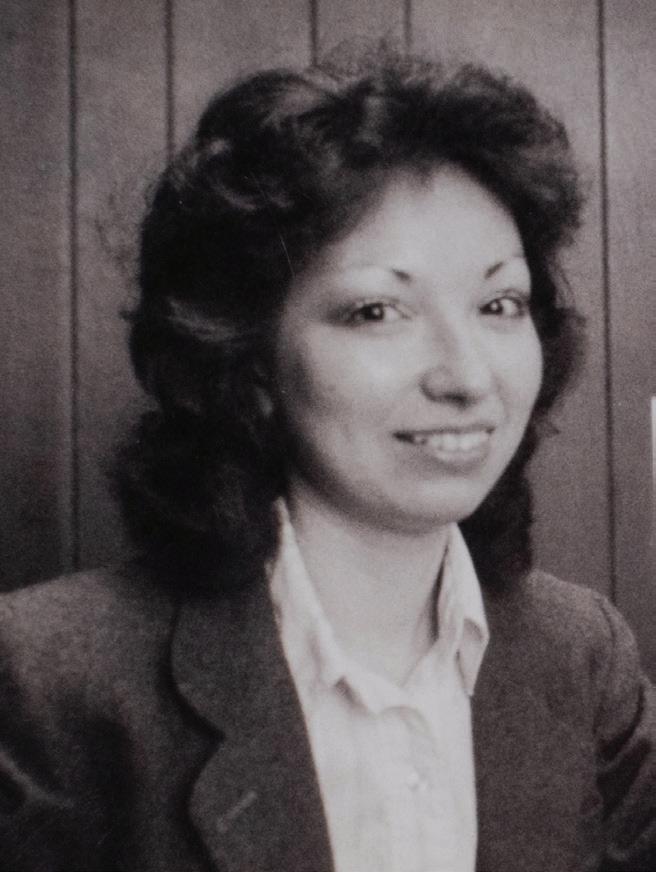
7 minute read
COVER STORY
Back in December 1983, Emily Born began what would become a 39-year career writing and editing for this publication.
Encapsulating time RETIRING EDITOR LOOKS BACK ON LONG CAREER
By Emily Schilling
Magazine writers possess the enviable ability to encapsulate time with every word they write. That’s because their stories and articles often reflect what was going on when they were written. So, as I look back on 39 years at Indiana Electric Cooperatives/Indiana Connection, the articles, headlines and columns I’ve written; the photos I’ve taken; and the stories I’ve edited all tell the story of my career and the years past better than I could on my own.
FIRSTS
I joined Electric Consumer (former name of Indiana Connection) as a staff writer in December 1983. The first issue I worked on was the January 1984 issue. My first bylined news article appeared in that issue, a profile of the newly elected president of Indiana Statewide Association of Rural Electric Cooperatives, Inc. (now known as Indiana Electric Cooperatives), Ross Westfall:
Ross Westfall: REMC leader looks ahead
“While the nation enjoyed the radio adventures of Buck Rogers and Amos and Andy and followed the birth of rural electrics in 3-cents-a-copy newspapers, Ross Westfall spent his nights shoveling coal.
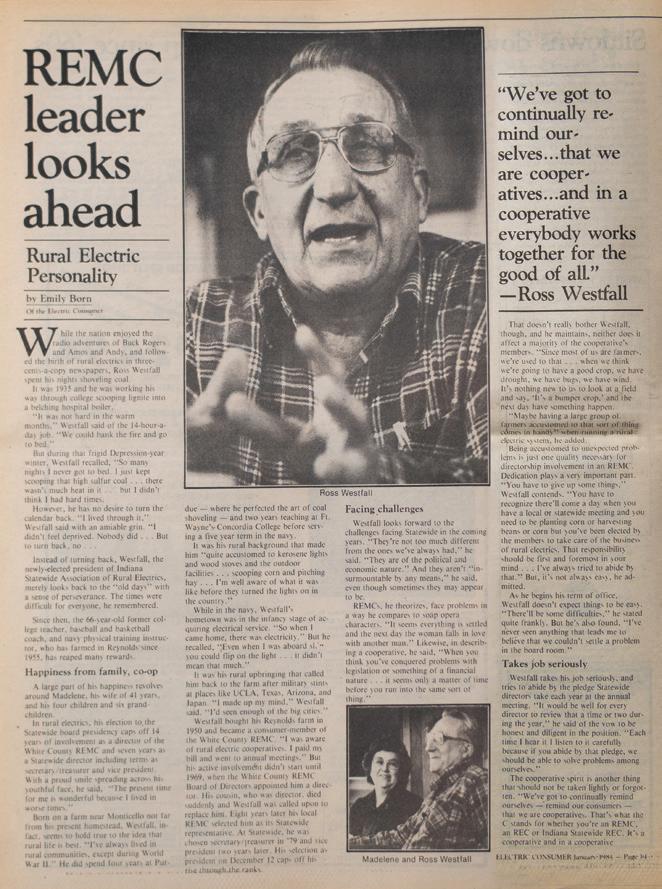
Schilling (then Emily Born) interviewed Ross Westfall soon after he was elected president of Indiana Statewide Association of Rural Electric Cooperatives, Inc., in December 1983.
It was 1935 and he was working his way through college scooping lignite in a belching hospital boiler.” Westfall was an avid reader of Electric Consumer throughout his life. A former teacher, he’d occasionally contact me if a grammar error made it to print. Knowing he was keeping an eye on things always kept me on my toes!
Later that year, I penned a couple of cover stories that showcased some timely topics in the mid-’80s. In June 1984, my first cover story:
Computers go country
“How’re you gonna keep ’em down on the farm after they’ve seen an Apple III?
Easy. Because now the whiz kid computer experts have made way for a new breed of terminal wizard — the farmer. And Elsie the cow, Porky the pig and 800 acres of soybeans can only benefit from the new trend. Though some farmers were using computers back in the early ‘70s, agricultural computing has only programmed its way into the limelight in the past few years. Even with its relatively short history, on-farm computers have changed considerably and face an even more innovative future.” Back then, personal computers were just coming into their own. To introduce readers to new-fangled tech terms, because “it’s obvious computers are here to stay” (even though floppy disks and CRTs weren’t) we included a sidebar which explained just what “computer” and “program” meant.
In August 1984, I interviewed a Clay County couple living on dioxincontaminated land. They suspected the toxic chemical was behind the mysterious death of their cows, a
recurring skin rash and a story almost too unbelievable to be true.
Dioxin: Is it killing Mack's cows?
“Dime-sized red welts spot Mack McCullough’s feet. His wife, Caroline, suspects it’s his rash creeping up again.
The itchy patches have plagued Mack the past five years. Along with 47 Holstein cows that have died mysteriously, rotting away from the inside out, and shovels-full of dead birds that have fallen from maple and locust trees around the farmhouse, the skin rash may be visible evidence of an unseen enemy at work, they believe.
For the McCulloughs, rural Clay County residents for 23 years, are living on dioxin-contaminated land.
An Environmental Protection Agency soil test of their dairy farm last November revealed levels from 26 to 180 parts per billion of octadioxin, one of 75 man-made chemicals in the dioxin family. But neither of the McCulloughs, nor the EPA, know much about octadioxin’s hazards.”
In October 1984, Mike Hanley, who was managing editor of Electric Consumer when I was hired, was named editor and I became managing editor.
In May 1985, the publication commemorated the 50th anniversary of rural electrification in Indiana with historic photos, milestones and a timeline, and reader remembrances. This special issue was just one way Indiana’s electric cooperatives celebrated this golden anniversary. We held a statewide electricity-themed art contest and printed a calendar with historic photos, and I wrote a book about rural electrification in Indiana.
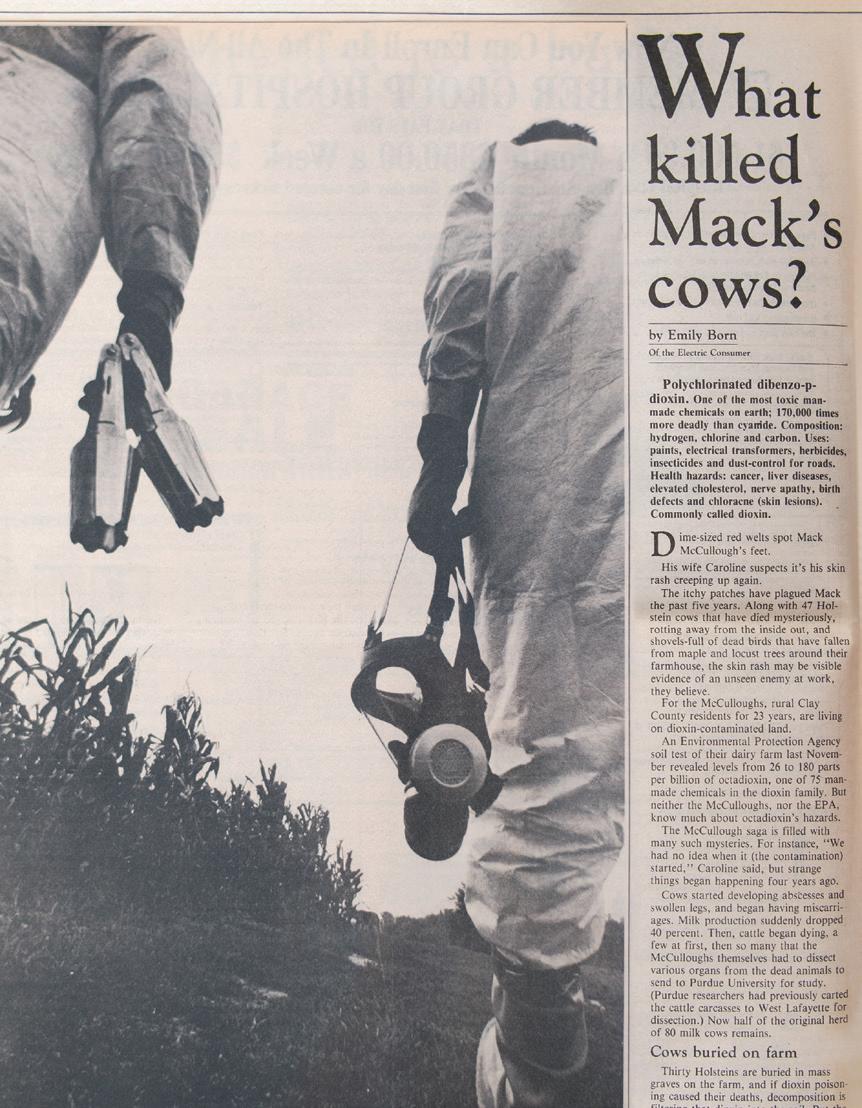
The "What killed Mack's cows?" feature story earned Schilling awards from the Cooperative Communicators Association and the International Association of Business Communications. My first issue as editor of Electric Consumer was the October 1985 issue. I wrote my first “That Reminds Me” column in that issue:
“There was going to be a picture of me accompanying my first column so you’d immediately know it was me and not Mike Hanley who was writing it.
Everything was going good until, in the middle of a hectic deadline week, the photographer handed me my 5 by 7 portrait. He was obviously pleased by his studio expertise.
I wasn’t. Through some measure of trick photography, I acquired a dark shadow on one side of my face resembling a half-shaven beard accentuated with a
Through its 71-year history under two name changes (from Indiana Rural News to Electric Consumer to Indiana Connection), this magazine has had only four editors. Schilling, its fourth editor, has held the position since September 1985.
handlebar moustache. I have many problems, but masculine facial hair is not one of them.” Note: My photo, sans faux facial hair, did make it into the November 1985 issue.
The publication evolved through the years, from a tabloid newspaper to a “hybrid” style publication (on a whiter, heavier paper) in June 1993, finally to a slick stock magazine in February 2013.
That Reminds Me: Brand new, all for you
“This month, Electric Consumer has shed its tabloid newspaper format and has relaunched as a magazine. As you peruse the pages, you’ll find a contemporary design, more extensive use of four color, and expanded energy, food and outdoor life sections.”
continued on page 24
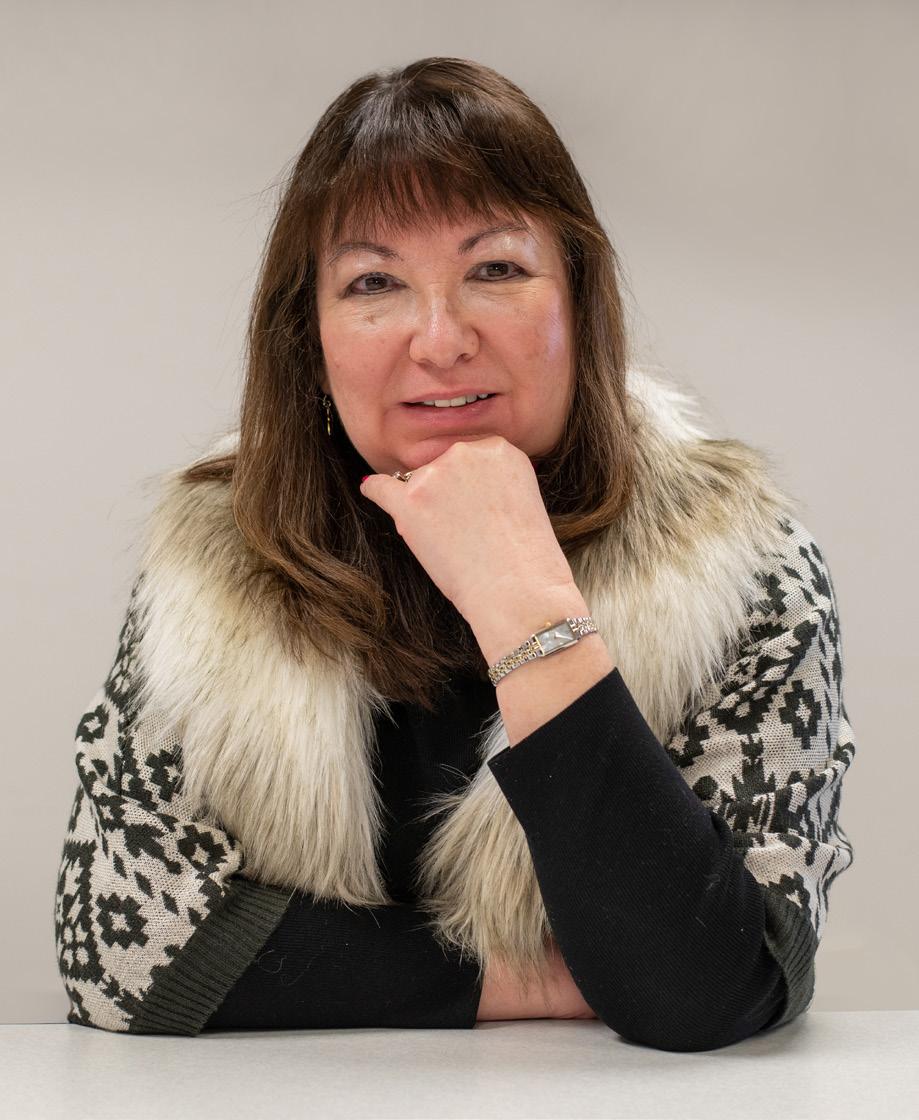
Our evolution continued and in March 2019, the magazine’s name was changed to Indiana Connection. My column that month addressed the name change: “As any new parent will tell you, selecting the perfect name is not easy.
Of course, naming a child and naming a magazine are not quite the same thing. But both scenarios usually involve hours of debate, input (both solicited and sometimes unsolicited) from numerous sources, and a long and often ongoing list of pros and cons for each suggestion.
There’s a reason for this arduous process. A name is something you can’t just change on a whim. You live up to it. Make it your own. Make it proud. It stands to reason that it takes time to settle on one that ‘fits.’” FAVES
Among the favorite articles I’ve written:
1The “Cook’s Profile” feature we ran from March 1994 to December 2007. Getting to know some of the readers who submitted recipes to our food section through the years was great fun. I’ll always remember their hospitality during our visits to their homes.
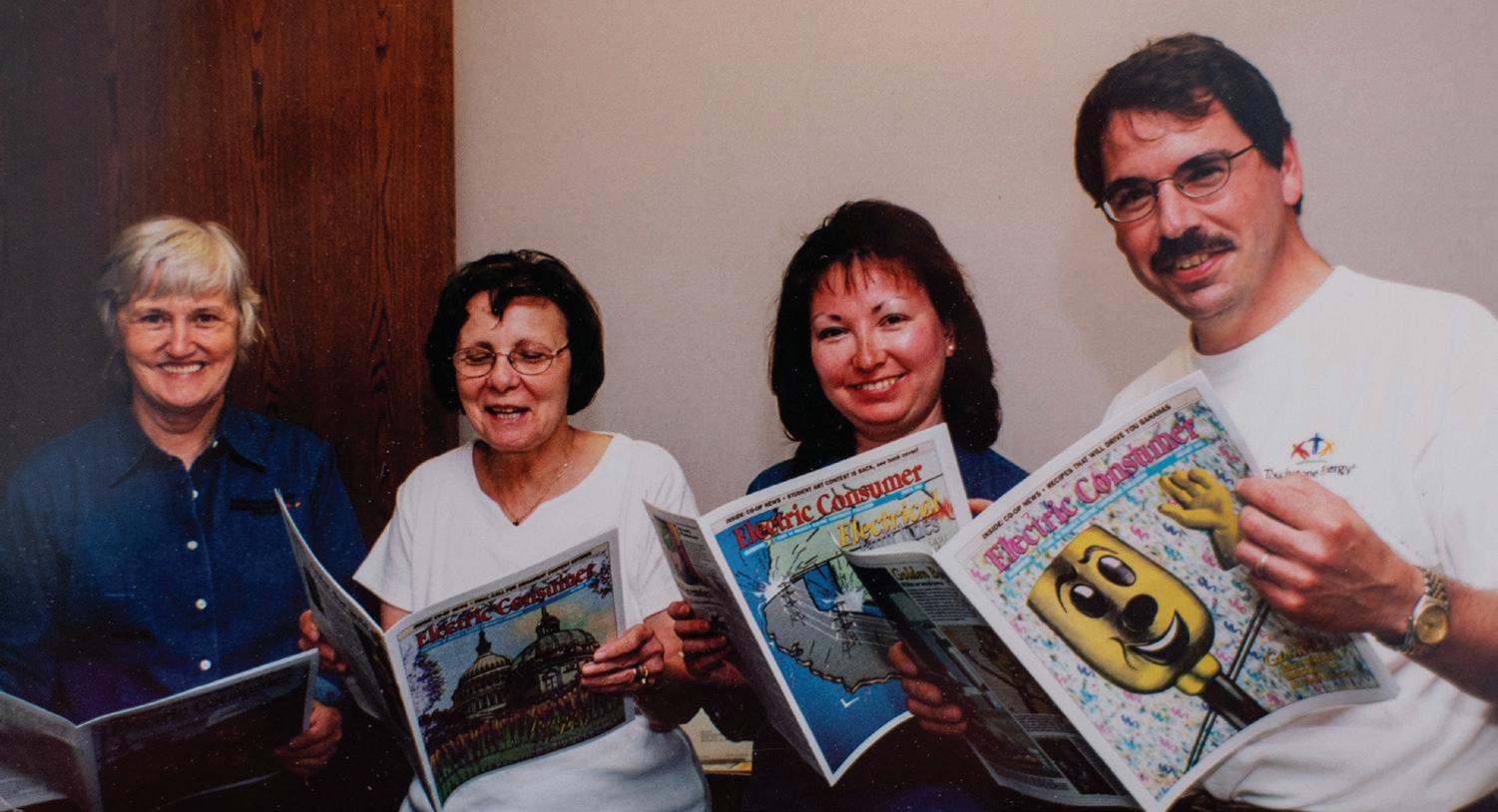
In the spring of 2001, the Electric Consumer staff marked the publication's upcoming 50th anniversary. Staff members included Rose Anne Sellers, Connie Staggs, Schilling and Richard G. Biever.
2A feature on newly crowned Miss America Katie Stam in 2009 and a followup interview five years later. Stam, who grew up on a farm on Jackson County REMC lines, is just as friendly, personable, well-spoken and humble as you’d imagine a Miss America to be.
3An interview with Mina Starsiak Hawk of the HGTV home renovation series “Good Bones.” I’d met Starsiak Hawk and her mom/business partner/costar Karen E. Laine in 2016 when they spoke at a program I coordinated. Since then, we’d tried to do an article about them. Finally, Senior Editor Richard Biever was able to schedule an interview for the July 2021 issue, and together we had a great conversation with Starsiak Hawk soon after “Good Bones” began its sixth season.
One chick pages 18–23 and a hammer
MEET BUSINESSWOMAN, HGTV STAR AND AUTHOR MINA STARSIAK HAWK 4 I have several memorable columns. One was about my daughter’s horseriding days, when she gravitated toward a temperamental horse named Tucker and forged a special equine relationship. I also remember a whimsical story about my first boyfriend that I based on a favorite column from a college journalism class. (That relationship lasted one day. We were in kindergarten.) Plus, I enjoyed the Christmas columns I wrote through the years. In my early years,I talked about that season’s unusual or extravagant gifts, then later began giving away some of my favorite things in reader drawings.
FUTURE
Although I’m retiring from the magazine this month, I don’t think I’ll ever stop writing. Ever since I began my journalistic training — and later career — I’ve known writing and editing is what I’ve been meant to do. My dream now is to write a novel. So, if all goes according to plan, you’ll be able to read my work — in book form — sometime in the future.
Emily Schilling is retiring as editor of Indiana Connection this month.

